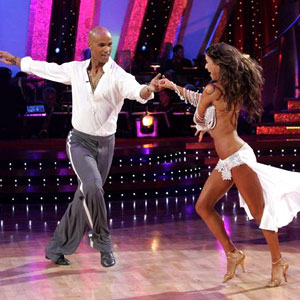
1. Dance full out. You can dance small or you can dance big. Have you watched ‘Dancing With the Stars’? Do the performers get any points for holding back? No, the judges want to see full expression and commitment to the movement. Are you committed to your business? Do you really go for it? Put in your heart and soul? If you’re going to do something in your business, do it fully. Accept the risk. Make the leap of faith. When you make a decision, get fully invested in implementing it. Get past your comfort zone. Go for it.
2. Leaders take care of their followers. Followers have entrusted themselves to you. It’s your job to steer them toward open space and away from potential bumps and bruises from obstacles along the way. It’s your job to give good instructions so that they can respond easily. You will learn by how they respond if your instructions were clear enough. You’ll continually fine tune your instructions so their responses produce the results you’re looking for. If you don’t get the response you’re looking for, hold yourself accountable and figure out how to be a better leader. Make your followers look good. Whether you’re a leader on the dance floor or the office, the same tenets hold true.

3. Followers maintain their own strength, balance, and frame. It’s your job to be steerable, not wimpy. Dancers maintain frame, which means they don’t let their arms collapse or their shoulders give or their spines twist. If their bodies turned to spaghetti, the leaders wouldn’t be able to steer them anywhere. In the business world leaders expect you to use your judgment, maintain the company values, keep yourself stable and strong to fulfill your role. Followers provide real feed back that comes from a center of strength. It helps the leader be a better leader.
4. The value is in being connected. Leaders and followers are responsive to each other’s movements. Good dancers connect with each other. In business we connect  with our clients and with our employees. Gallup polls show that customer loyalty is not as much about customer service as it is about empathy and the emotional bond that forms among people who make each other feel special and unique. Retaining clients reduces marketing costs and increases buying frequency. Employee retention reduces turnover costs, increases the stability of the customer experience and retains knowledge within the organization . Understanding the emotional intelligence of leveraging points of connection can make or break your bottom line. It’s a business strategy.
with our clients and with our employees. Gallup polls show that customer loyalty is not as much about customer service as it is about empathy and the emotional bond that forms among people who make each other feel special and unique. Retaining clients reduces marketing costs and increases buying frequency. Employee retention reduces turnover costs, increases the stability of the customer experience and retains knowledge within the organization . Understanding the emotional intelligence of leveraging points of connection can make or break your bottom line. It’s a business strategy.
5. It’s all about action. Dancing requires action. You can’t learn or practice dancing by just watching. You have to get up and do it. In business we also learn by doing. Sure you can watch someone else for a while, or read about a subject. But you really need to be doing business everyday to sense the pitfalls, understand the terrain, and experience the joy of success. You can plan all you want, but it’s execution that will make revenues

 Jeri Quinn from Driving Improved Results is an executive coach, management consultant, speaker and author who focuses on communication in her work with executives and companies. She is the author of The Customer Loyalty Playbook, 12 Game Strategies to Drive Improved Results in Your Business. With more than 40 years as a serial entrepreneur.
Jeri Quinn from Driving Improved Results is an executive coach, management consultant, speaker and author who focuses on communication in her work with executives and companies. She is the author of The Customer Loyalty Playbook, 12 Game Strategies to Drive Improved Results in Your Business. With more than 40 years as a serial entrepreneur.

